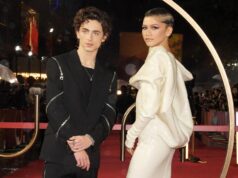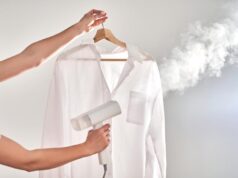When asked in interviews where his inspiration for fashion design came from, Virgil Abloh would often cite a Rem Koolhaas building—one he had long admired since his architectural studies at the Illinois Institute of Technology. This cross-disciplinary thinking defined the late multi-hyphenate designer’s approach to the creative industry he once dominated: A fluid realm in which to explore, create, and push the clearly defined boundaries that once kept him on the periphery. Throughout his impressive career, Virgil’s creations ranged from luggage and speakers to water bottles, sneakers, and apparel. “I don’t get too bogged down in the clothes,” the designer once told The Cut. “For me, it’s one big art project, just a canvas to show that fashion should have a brand which has someone behind it who cares about different contexts. Social things.”
This is one of the many reasons Virgil left such a big imprint on the creative industry as a whole. Not only did he open up an entire realm of possibility for Black youth in fashion, art, or design, but Virgil also made it his mission to do so. “Everything I do is for my 15-year-old self,” he said in another interview. In a conversation with Pharrell, the designer said, “My real job is to make sure that there’s like six young Black kids that take my job after me.”
That hyper-awareness translated into organized resources for students, with classes such as How to Use Adobe or How to Name Your Brand offered as part of his “Free Game” educational platform. In 2020, Virgil announced the creation of his Post-Modern Scholarship Fund, a charity that has raised over one million dollars in support of the next generation of Black fashion designers. It was his goal to uplift not only youth but also streetwear, a category in fashion that before Virgil hadn’t been taken seriously in the upper echelons of the industry.
After his death last November, creatives flooded social media to share the impact Virgil had made on them and their careers. In particular, those who had correspondence with him, like the designer Hanna Ali, took screenshots of inspirational text messages or words of encouragement he had sent throughout the years. By December, The New York Times published a compilation titled “Texts From Virgil.” From words of encouragement to bits of wisdom, each message shed light onto the responsibility he felt for not just those around him, but the entire community. In every corner, Virgil left his mark, carving a path for the next generation behind him—one for those in every field he dabbled in, including the overwhelmingly white field of architecture and design.
Back in 2016, the designer debuted his first furniture line, titled The Framing Collection, where he translated the deconstructionist sensibilities that defined his clothes into the world of furniture with a modern minimalism that was matter-of-fact, yet daring. By 2018, his Makerad furniture collection with IKEA was a highly anticipated hot ticket item. The signature off-white block letters in quotations ventured from T-shirts onto rugs and wall clocks. Other items included a glass door cabinet, a wood table, and a daybed. “In the same way you might hang a piece of artwork on your wall, art can bleed into objects like a chair, table, or rug,” Virgil shared in a statement, embracing the fluidity that characterized his creations.
Although the collections came and went like wildfire, a few pieces can still be spotted on the market. Just this summer, a gilded version of Virgil’s infamous Alaska doorstop chair was a central feature on display at Christie’s Hamptons location for a pop-up with Carpenters Workshop Gallery. The iconic receipt rug from his IKEA collection—originally priced at $68—is now fetching upwards of $5,000 on sites such as 1stdibs.
A few weeks after his passing, Louis Vuitton paid a touching tribute during Art Basel in Miami for his final collection. Viewers watched as an LV logo-covered air balloon with a young boy ventured off into the sky, accompanied with audio from Virgil: “I’ve been on this focus, in terms of my art and creativity, of getting adults to behave like children again. That they go back into this sense of wonderment. They start to stop using their mind, and they start using their imagination,” his voice carried as the film faded.
One thing is clear: Just like his inspirational words, Virgil’s creations are there to stand the test of time and inspire the childlike spirit in many—far more than six young Black kids. Below, a few Black creatives from fashion to furniture share the impact of his life, and passing.
Heron Preston, fashion designer
“Virgil was really great at seeing the potential in someone when that someone was not able to see it in themselves. He was able to push people and make people feel so incredibly confident in themselves that being around him was so special. Virgil was a magnet for positivity and possibilities; just his presence and being able to call him a friend was a blessing. He made it seem so easy to break down these walls. He helped us dream, see possibilities, give us opportunities that were so specific to build our own craft. Virgil could make you feel like you could conquer the world after having a conversation with him.”
Jared Blake, cofounder of Lichen
“The weight of what he was carrying for this culture we participate in is felt by the void he left behind. In the moment of his passing we became increasingly responsible for the furthering of whatever we’re supposed to do with the torch. If you take that flame and decide to go the design route as a Black creative, it’s more possible to comprehend because of Virgil.”
Fresco Steez, community activist and designer
“Virgil intentionally created at the intersections of culture, art, and design. Virgil’s extensive body of work engaged his audience in a curiosity of the social structure, status quo, and the conditions that we collectively face. In doing so, Virgil’s journey served as a possibility model for Black artists and designers like myself to see ourselves, and the culture we create, as central to the creative world, despite being a white-dominated field. Virgil leaves us with a legacy that challenges the traditional paths for artists and opens up the worlds of art and design to people from all walks of life.”
Jerald “Coop” Cooper, founder of Hood Midcentury Modern
“I can’t stop thinking about the act of archiving. Or the void that exists as I scroll on Instagram. Not seeing that [avatar] lit up with new vibes, perspective, and endless inspiration.
There is a void.
Imagine what we witnessed. Image, daily. Being able to see into the mind of one of the greatest designers ever. It’s been safe to say that V is one of the illest American designers of all time. But this was happening in front of our eyes.
There is a void.”








